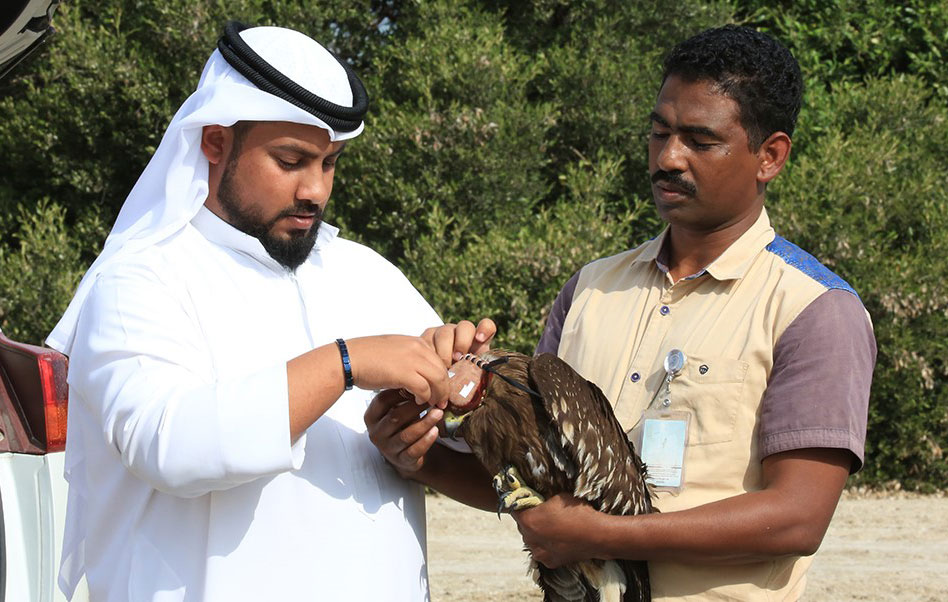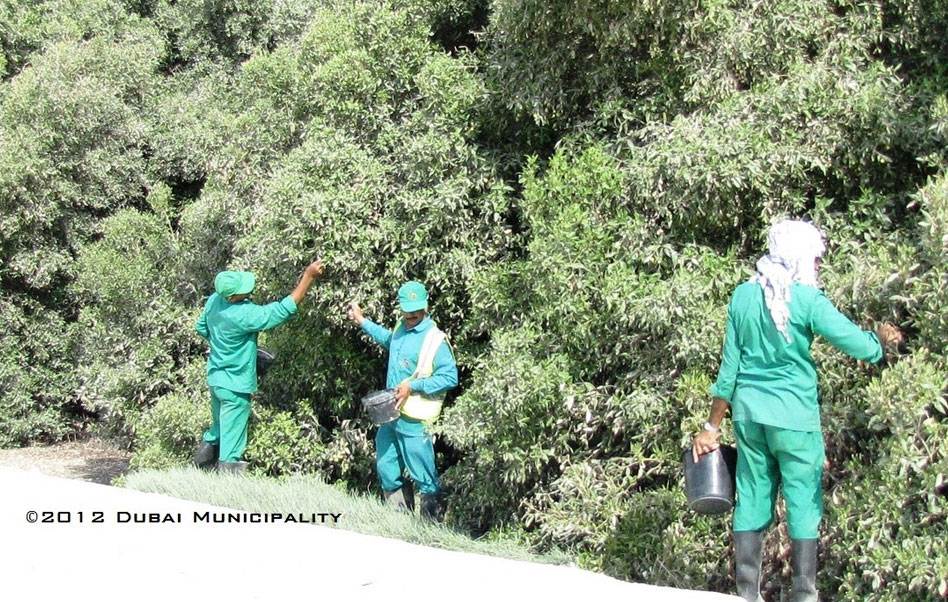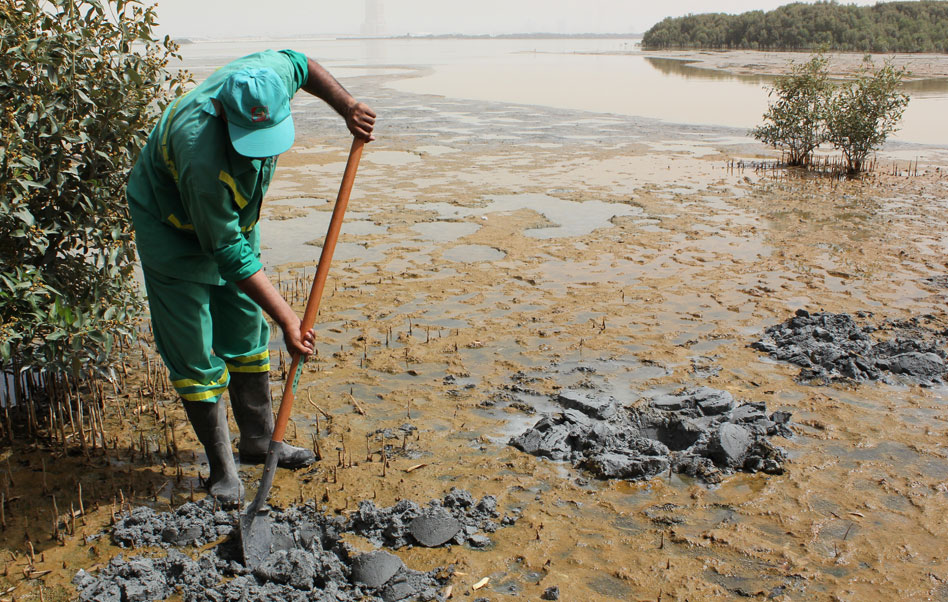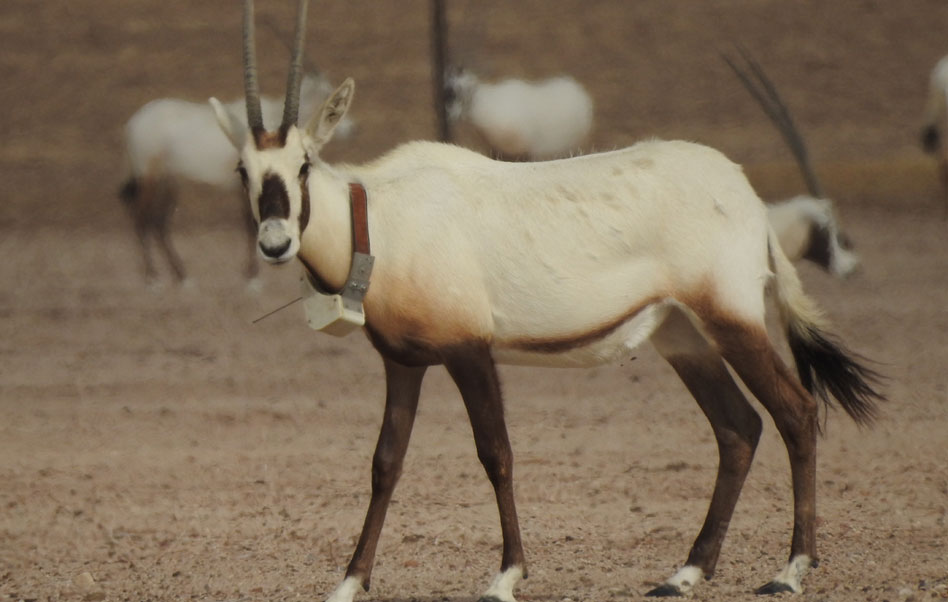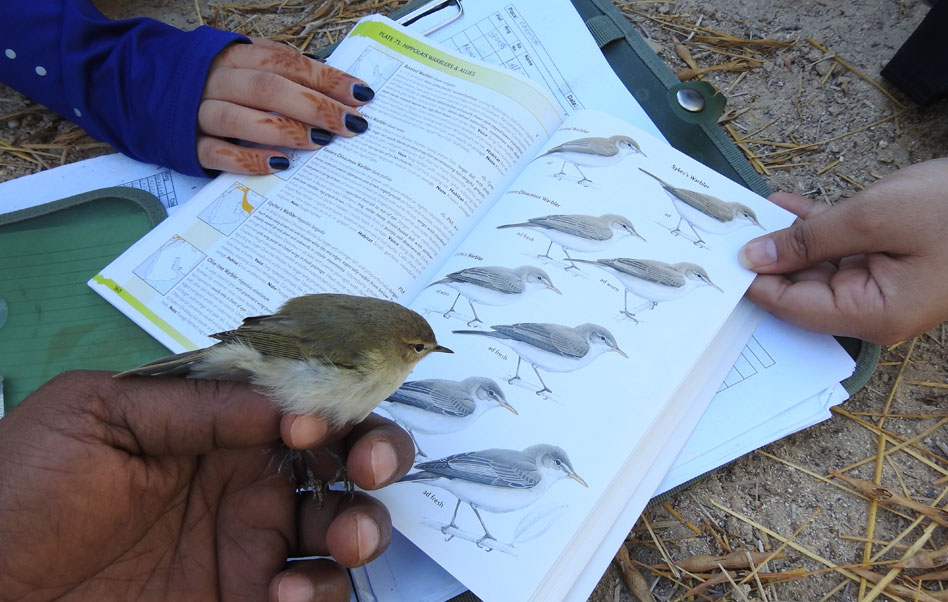Habitat Management
Dubai Municipality implements a variety of science based, nature conservation initiatives to ensure that the eight Protected Areas in the Emirate of Dubai are healthy and functioning well. The success of our efforts would not be possible without the generous support of our partners.
Find out more about our programmes:
Mangrove Management
Mangrove forests are highly productive ecosystems that contribute food, fuel, fibre and fodder to many coastal communities around the world. Mangrove forests prevent coastal erosion, stabilize the coastline, and enrich the soil and the aquatic environment. Mangroves also act as windbreaks, thus protecting the coastal land from storm damage. Finally and perhaps of greatest importance, mangroves are significantly more efficient than terrestrial forests at storing atmospheric Carbon Dioxide (i.e. CO2), and thus are recognized as an important tool in responding to climate change.
Thanks to the extensive planting done since the 1990’s in the Ras Al Khor Wildlife Sanctuary (RAKWS) and more recently at the Jabal Ali Wildlife Sanctuary (JAWS), the mangrove forests in Dubai have been thriving. Mangrove habitat surveys are conducted to monitor their condition, ensuring optimal growth and their continued provision of valued ecosystem services to society.
Osprey Nest Installations
Artificial Osprey nest platforms connected at the top of telegraph and metal poles were placed strategically at various locations in the RAKWS and JAWS to encourage breeding of these aquatic birds of prey. The artificial nests were made out of local tree branches and shrubs, which are the same materials the birds use. The Ospreys are frequently observed using the platforms for perching and fishing.
Camera traps
To facilitate the conservation management of the Hatta Mountain Reserve, Dubai Municipality has deployed camera traps to monitor both wildlife and changes in the environment over time. The cameras have successfully recorded the presence of the endangered Arab Tahr and other important species that are regarded as biological indicators.
Water Quality Monitoring in the Protected Areas
The Natural Reserves Section regularly monitors water quality of Ras Al Khor Wildlife Sanctuary, Jabal Ali Wildlife Sanctuary, Al Marmoom Desert Conservation Reserve and other protected areas by periodically taking and analyzing water samples.
Mangrove Density Survey
A Mangrove Density Survey at Ras Al Khor Wildlife Sanctuary confirmed that the Grey mangrove, Avicennia marina, is well established, exhibiting a dense canopy of green leaves and much fruit. Overall the health status of the Mangroves is considered to be good, given the high density of trees, seedlings and saplings; absence of disease; and abundance of epifauna recorded in the area. Epifauna are animals like crabs, snails and molluscs that live on the sea beds and riverbeds or surfaces of submerged hard objects (e.g. rocks, breakwaters).
Seagrass Studies in JAWS
Regular surveys along the coast of Dubai reveals that the Jabal Ali Wildlife Sanctuary has the most extensive seagrass beds in the Emirate of Dubai.
Wildlife Management
Bird Monitoring
Part of the regular surveys that are being conducted in the Ras Al Khor Wildlife Sanctuary is the determination of the monthly population of all avifauna, as well as participating in the annual census of water birds in the country, which is part of the global census in cooperation with the World Wetlands Organization.
Bird Ringing
The process of birds ringing is carried out in the protected areas in order to understand the behavior of the migratory bird species, with a special focus on water birds. A ringing project was launched in late 2013 by the Natural Reserves Section, Environmental Sustainability Department of Dubai Municipality aiming to tag migratory birds in order to determine their migratory pathways for better management of its habitats. Hundreds of various birds were ringed /recaptured at the site during the last period using metal rings. The project aims to:
1) Identify the various bird species in Dubai
2) Follow bird migration through recoveries locally and worldwide
3) Collect biometric data for species identification
4) Build a data base for future record of recoveries.
Bird Flu Monitoring in RAKWS
Dubai Municipality implemented a comprehensive monitoring program on migratory birds in Dubai. The bird flu monitoring was a proactive mitigating measure in anticipation for a possible spread of a disease, the Bird Flu or Avian Influenza in the Emirates. The Bird Flu or Avian Influenza is a contagious disease of animals caused by viruses that normally infect birds, particularly the “Highly Pathogenic Avian Influenza (HPAI)” strain, which is fatal and can be transmitted to humans causing severe illness and possible death. The disease can spread from country to country through migratory birds including waterfowl, sea birds and shore birds. Because of such proactive measures, Ras Al Khor Wildlife Sanctuary remains a safe haven for avifauna.
Wildlife Satellite Tracking Programme
The Wildlife Satellite tracking project was launched in 2018 to tag mammals, birds and marine turtles. Around 9 collars for animals, 10 transmitters for birds and 2 satellite trackers for turtles were mounted and planned for the project using the Argos GPS collars transmitters. The program has been implemented in the protected areas since 2018 till 202, and will be continued for the future to gather enough information in understanding the movement of wildlife and its conservation. The mammals tagged included: Arabian Oryx, Arabian Mountain Gazelle, Arabian Sand Gazelle and the Red Fox. The avifaunal species included: the Greater Spotted Eagle, Lappet-faced Vulture, greater Flamingo and Grey Plover, while the marine turtles tagged were the Endangered Hawksbill Seaturtle that are nesting in the Jabal Ali Wildlife Sanctuary. Through the program, maps of the migration routes of individuals were analyzed to provide information in the concerted efforts in the conservation and protection of the habitats used by species during their migration or mobility along the reserves.
Biodiversity Survey
Part of the regular surveys that are conducted in the sanctuary to monitor wildlife and its environmental indicators include: bird counts, fish surveys, invertebrate surveys and mangrove density surveys. The findings from the surveys provide an impetus for the conservation programmes and the overall environmental management of Dubai Protected Areas.
Breeding Birds in Marmoom
Initiated in 2018, the programme aimed to identify the breeding birds in the reserve. The main breeding season is in summer from February to June and majority of the breeding birds are passerines and ground nesting birds. Every year, new species arrive and have been observed to start breeding (especially around the lakes) in the reserve due to the availability of food and shelter.
Ecology of Arabian Oryx in Al Marmoom
The program aimed to identify the distribution range of the Arabian Oryx within the reserve and study its population dynamics. During the study, the total number of Arabian Oryx and their distributional range was identified. More than 60 feeding stations were provided with food, shelter and water to support the population especially during the summer season. The dynamics of the population group was also studied and the proportion of males and females, young and old were also determined.
Turtle Tagging in JAWS
The satellite trackers were placed on sea turtles only in 2019 and 2020. Two devices were installed, one for each nesting season in both years. The study showed the movement of turtles inside the sanctuary and the Arabian Gulf.


